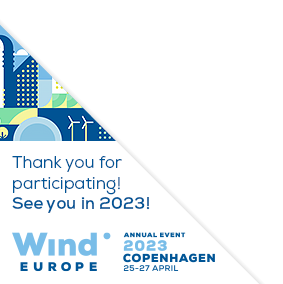Posters
Siblings:
ProceedingsProgrammeSpeakersPostersContent PartnersGlobal Markets TheatreWindTalks for InnovationProgramme Committee & Abstract ReviewersSpeaker's DashboardCome meet the poster presenters to ask them questions and discuss their work
Check the programme for our poster viewing moments. For more details on each poster, click on the poster titles to read the abstract. On Wednesday, 6 April at 15:30-16:15, join us on Level 3 of the Conference area for the Poster Awards!

PO280: Microscale simulations of extreme events in complex terrain driven by mesoscalar simulations
Matias Avila, Senior Researcher, Barcelona SuperComputing Center
Abstract
In this work, we apply a downscaling strategy to analyze extreme events. The coupling applies mesoscale momentum budget components (tendencies) from the WRF model as forcing terms to the governing microscale equations. Our study focuses on flow over complex terrain during specific days to reproduce extreme weather events. The interaction of the meso- and micro- scale features are relevant in the simulation of extreme conditions. The simulation results are compared with observations from meteorological towers and instrumentation located in the nacelle of wind turbines in two different wind farms by analyzing time series and wind profiles. In this work, we present the implementation of the mesoscalar coupling to the microscale solver using both URANS and LES closures. We compare the accuracy of the obtained results and the spent cpu-time using both closures. The microscale model and the coupling is implemented in the highly parallelized Alya code, developed at the Barcelona Supercomputing Center. While microscale simulations driven by mesoscale tendencies is still a relatively new approach, we show that it has great potential for understanding transient events under extreme weather conditions. The wind industry can use such simulations as a tool to enhance forensic analysis in cases of accidents. They could also be helpful to understand better the flow over complex terrain during wind farm planning. This would allow identifying riskier areas within the wind farm (in terms of extreme wind speed, gusts, turbulence intensity or identifying areas with wind recirculation) and thus to better position the wind turbines to avoid damage under extreme weather conditions. Simulation results using URANS and LES closures agree reasonably well with observations. However, we observe that the dynamics of the LES simulation results agree better with measurements of almost all wind turbine positions.










Follow the event on: